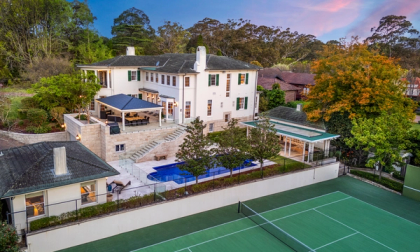
Do we need more residential development on Sydney’s Upper North Shore?
Australia’s real estate market has experienced significant shifts in recent times. Following a sharp decline in housing values, the market has started what appears to be a healthy rebound, with two consecutive months of positive growth.1 As we embrace winter, the outlook for the market remains optimistic, driven by factors such as low competition, rising property prices, high clearance rates, and buyer motivation.
Here we delve into the current state of our property markets and take a look at some of the opportunities and challenges particular to the winter season.
The property market is driven by supply and demand. Right now, demand eclipses supply.
This excess demand can be seen in our rising property prices. According to CoreLogic, Sydney’s dwelling value rose by 4.9% over the second quarter of 2023 and 1.7% over June.
On the other side of the equation, however, supply is low. In May 2023, Sydney’s advertised listings were 15% below the same time last year and 24% below the previous five-year average, according to CoreLogic data.
There’s also a supply issue with new housing. In the 12 months to April 2023, private sector building approvals consisted of just 464 new dwellings in the Ku-Ring-Gai Council area and 198 new dwellings in Hornsby.
Sydney’s population is rising and is forecast to hit 6.1 million by 2033. So both councils fall well short of meeting Australia’s two per cent population growth rate. In fact, new dwelling approvals are at less than one per cent of existing stock levels in both council areas.
The result of this imbalance is that we’re seeing the fear of missing out (FOMO) taking hold in both the sales and rental markets.
We love our area just how it is, but we also acknowledge that we need to be part of the solution. We need more housing, but we need the right type of development too.
With that in mind, here are the types of properties we could do with more of here on the Upper North Shore.
Larger apartments and villas that suit downsizers
Downsizers are a significant force in Sydney’s Upper North Shore property market. The simple reality is that there are not enough properties to satisfy demand from this important demographic. Many people we encounter would like to list their family home and move somewhere lower maintenance without leaving our area. Because they can’t find anything that suits their needs, they tend to stay put.
While downsizers want something smaller, a one or two-bedroom property often seems too small. Many want a spacious single-level, three-bedroom home. That could be a large apartment with lift access, a townhouse or a single-storey villa close to amenities and transport.
Downsizers often want parking, outdoor space and room to entertain or have the family stay. In other words, they want all the comforts they’re used to from a large family home without the same hassle.
Increasingly, downsizers are seeking high-end properties with luxurious finishes.
In recent years, Upper North Shore locations like St Ives have become popular with downsizers, who are often drawn to the village atmosphere and the range of properties available.
Building more properties that fit downsizers’ requirements should lead to more family homes being listed for sale. This, in turn, should allow more movement up and down the property ladder – a good thing for everyone.
A good range of affordable housing
Housing affordability is a serious issue, especially for first-home buyers, and it played a role in Labour's Federal election promises and 2022 election win.
The Upper North Shore is not cheap compared to many parts of Australia. We have some of the highest median house prices in the city, and they’re only growing higher – over the three years to the end of 2022, Killara's median house price rose a staggering 63%.
While this may seem great news for property owners, it also priced out many would-be buyers. This includes many low-wage workers and people who work on the Upper North Shore in roles essential to our community, such as teachers, nurses, emergency services personnel, and health care staff.
For our community to thrive and be diverse, we need a wider range of affordable housing to buy and rent.
We’re pleased that to work towards overcoming this complex challenge, the new State government has tried to incentivise developers by introducing a fast-tracked approval process for new developments valued over $75 million that contain at least 15% social housing.
Family-friendly apartments
Thanks to a growing population and rising house prices, apartment living has become a longer-term proposition for more people. Apartments let buyers live in and experience suburbs they couldn’t otherwise buy into. For example, the median house price in Gordon is $3.51 million, while the unit price is $977,500.
For many families in our area, apartment living has also become a low-maintenance lifestyle choice that comes with access to good transport links and the excellent schools the Upper North Shore is known for.
But apartments need to be well-designed. Not every apartment dweller wants to live in a high-rise tower: many prefer a boutique block with a suburban style. We find the most demand is for apartments offering generous, versatile spaces, including home offices, outdoor areas, and privacy.
Terraces and townhouses
The compact nature of terrace homes and townhouses holds a lot of appeal for many buyers. This often includes people starting out, those upsizing from an apartment or downsizing from a house, and people simply looking for a stress-free lifestyle.
City-wide, there’s a shortage of this “medium density” housing type, often dubbed “Sydney’s missing middle”.It’s also a housing type we believe we need more of here on the Upper North Shore to satisfy the demand from buyers who don’t want an apartment or a large freestanding house.
St Ives (7.6%) and Hornsby (8.3%) have the highest percentage of semi-detached homes in their housing stock on the Upper North Shore. But we could do with so many more to satisfy buyer demand.
Traditionally, smaller terraces and townhomes have provided a cheaper entry point into prestige areas. But a new wave of prestige townhouse developments is selling for a premium (and in some cases for more than the median house price). Affordability is not necessarily the appeal any more.
The prices being achieved for high-end townhouses will likely encourage more developers to enter the medium-density space, focusing on prestige townhouse developments rather than apartment blocks.
Want more?
If you’re thinking of buying or selling in Sydney’s Upper North Shore or Hornsby, get in touch.
Limited supply spurring competition among highly motivated buyers
The current NSW property market presents vendors with a notable advantage due to historically low listing numbers. With high demand driving buyer competition, selling conditions have strengthened, evident through above-average clearance rates, faster selling times, and reduced negotiation. Nationally, the total number of homes for sale is tracking 28% below the usual levels, creating an opportunity for potential vendors to list their properties now rather than waiting for the traditional spring surge in activity.2
Although we’ve yet to see full confidence return to the market, certain buyer demographics are still highly motivated to enter the market. With low levels of advertised stock, rising clearance rates, and higher property values, buyer concern about missing out on great opportunities could become more pervasive. Additionally, as demand grows due to strong overseas migration and tight rental markets, some renters are expediting their purchasing decisions. The pool of available properties for buyers is currently the smallest it has been in over a decade, amplifying the sense of urgency.
Clearance rates remaining high
We’ve seen auction clearance rates consistently hitting 70% or higher in recent weeks, and property volumes are gradually increasing when they would typically start to decline. These trends, coupled with the upward pressure on housing values, suggest that the market is gaining momentum as we head into winter, rather than slowing down as it normally would. Stronger clearance rates, along with faster selling times for private treaty sales and reduced discounting rates indicate that sellers are regaining leverage in negotiations.
Interest rates and consumer sentiment are still a challenge
However, prospective buyers will continue to face hurdles this year, with relatively high interest rates and stringent loan assessment criteria. Moreover, low consumer sentiment levels may dampen the current exuberance of the market, and a significant lift in property activity may not occur until there is a broader improvement in consumer sentiment.
Economic uncertainty may lead to wavering confidence
Mixed forecasts by economists regarding interest rates contribute to uncertainty and lower consumer confidence levels. Some suggest there may be another pause in interest rate hikes, which could boost consumer spirits and drive an increase in buyer and selling activity, as lower interest rates typically serve as a catalyst for a further uptick in housing values. However, rate cuts are not anticipated in the near future, and there is even speculation of at least one or two further rate increases before the year is out. Nevertheless, any perceived economic stabilisation is likely to prompt increased buyer and seller activity.
Mortgage repayments expected to remain stable
While many economists are anticipating an increase in motivated selling and mortgage arrears in the short to medium term, most homeowners are expected to firmly prioritize mortgage repayments as economic pressures mount. Coming off record-low rates, banks reported 90-day arrears rates of around 0.5% to 0.6% by the end of 2022.3 Although this benchmark is projected to rise, most pundits predict that homeowners will cut back on discretionary spending rather than miss mortgage repayments or resort to selling their homes.
Looking ahead
While spring is historically a season marked by new listings and sales transactions, last year did not see the usual surge in activity and there appears to be a marked shift towards a strong winter season. Despite the current economic climate, our property markets continue to show resilience and promise for sellers. Limited competition, rising prices, high clearance rates, and buyer motivation contribute to a favourable selling environment, and we may see further activity as accumulated supply from potential sellers who have been holding back enters the market.
Such an increase in advertised supply could put pressure on property values and clearance rates as more homes become available, and high interest rates and low consumer confidence are also likely to have a continued impact on our markets. But by leveraging the opportunities open to them, understanding market dynamics and seeking expert advice from their trusted real estate agent, I believe vendors can make well-informed decisions and maximize their chances of success in the current winter market.
[1] https://www.corelogic.com.au/news-research/news/2023/corelogic-home-value-index-further-evidence-australias-housing-downturn-is-over [2] https://www.corelogic.com.au/news-research/news/2023/rising-prices-and-resilience-australias-winter-housing-outlook [3] https://www.rba.gov.au/speeches/2023/pdf/sp-gov-2023-06-07.pdf
Other buying, selling and investing articles and resources
Guide to property investment success in NSW
Selling a house or apartment in NSW eBook
Buying a house or apartment in NSW eBook
Was this content helpful to you?





